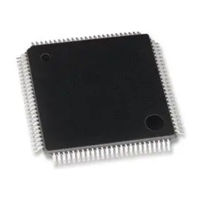STMicroelectronics STM32F439 Controller Manuals
Manuals and User Guides for STMicroelectronics STM32F439 Controller. We have 2 STMicroelectronics STM32F439 Controller manuals available for free PDF download: Reference Manual, Manual
STMicroelectronics STM32F439 Reference Manual (1731 pages)
advanced ARM-based 32-bit MCUs
Brand: STMicroelectronics
|
Category: Controller
|
Size: 24.2 MB
Table of Contents
-
-
-
Introduction73
-
-
Option Bytes88
-
-
-
-
CRC Introduction113
-
CRC Registers114
-
-
-
Power Supplies116
-
Low-Power Modes126
-
Sleep Mode129
-
Standby Mode136
-
PWR Register Map149
-
-
-
Reset150
-
System Reset150
-
Power Reset150
-
-
Clocks151
-
HSE Clock154
-
HSI Clock155
-
LSE Clock156
-
LSI Clock156
-
RTC/AWU Clock157
-
Watchdog Clock158
-
RCC Registers161
-
RCC Register Map210
-
-
-
Reset213
-
Clocks215
-
HSE Clock217
-
HSI Clock218
-
LSE Clock219
-
LSI Clock220
-
RTC/AWU Clock221
-
Watchdog Clock221
-
RCC Registers224
-
RCC Register Map267
-
-
-
-
-
Port Pins280
-
-
GPIO Registers283
-
-
-
-
(Syscfg_Exticr1)293
-
(Syscfg_Exticr2)293
-
-
-
(Syscfg_Exticr3)294
-
-
DMA Introduction304
-
-
DMA Transactions308
-
Arbiter310
-
DMA Streams311
-
Circular Mode315
-
Flow Controller323
-
Error Management325
-
DMA Interrupts326
-
DMA Registers327
-
-
DMA2D Control343
-
DMA2D Blender347
-
Watermark353
-
-
DMA2D Registers354
-
-
ADC Introduction390
-
-
Scan Mode396
-
Data Management403
-
ADC Registers418
-
-
-
DAC Conversion438
-
DMA Request440
-
-
DAC Registers447
-
-
-
DMA Interface459
-
Synchronization461
-
Capture Modes463
-
Crop Feature464
-
JPEG Format465
-
-
-
-
LTDC Interrupts489
-
LTDC Registers491
-
Counter Modes516
-
Is Not Used521
-
Clock Selection526
-
PWM Mode534
-
-
-
Break Feature572
-
-
Counter Modes585
-
Clock Selection593
-
PWM Input Mode599
-
PWM Mode602
-
Debug Mode617
-
-
-
Counter Modes645
-
Preloaded)647
-
Clock Selection648
-
Preloaded)648
-
PWM Mode655
-
One-Pulse Mode656
-
-
-
-
Counting Mode690
-
Preloaded)692
-
Preloaded)693
-
Clock Source693
Advertisement
STMicroelectronics STM32F439 Manual (36 pages)
Brand: STMicroelectronics
|
Category: Microcontrollers
|
Size: 0.43 MB
Table of Contents
-
-
-
-
Incorrectly12
-
-
-
-
-
Disabled18
-
-
-
-
Ipv6 Frames19
-
-
-

